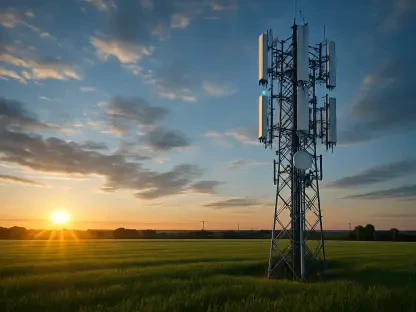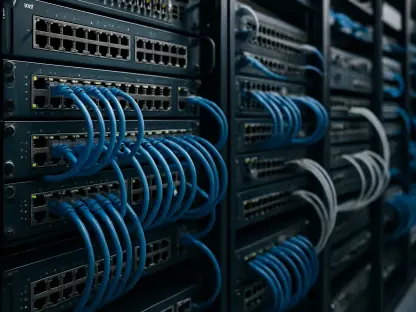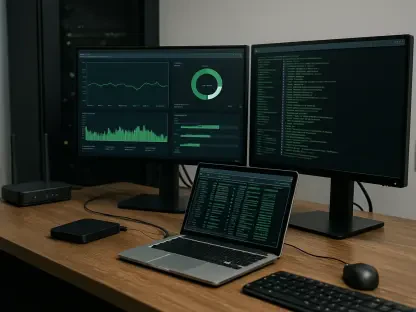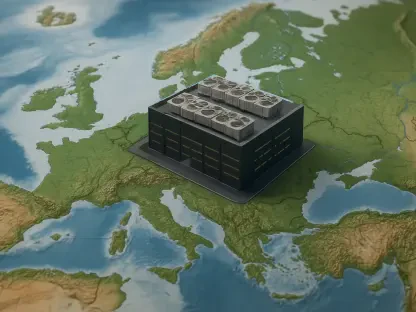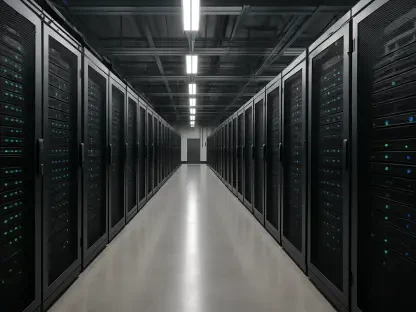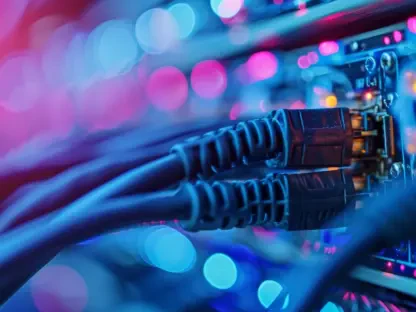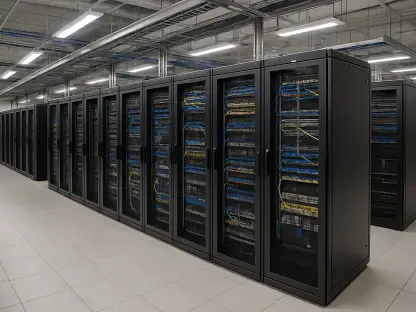What happens when two titans of technology combine forces to tackle one of the most pressing challenges in artificial intelligence? Picture a world where AI systems grow so powerful that their energy needs rival those of entire cities. Nvidia, the undisputed leader in GPU technology, and OpenAI, the innovator behind ChatGPT, have embarked on a staggering $100 billion alliance to build the infrastructure for tomorrow’s AI. This partnership, unveiled in 2025, isn’t just about money—it’s about redefining how AI is powered, scaled, and integrated into every facet of life. The tech world is watching, and the stakes couldn’t be higher.
The significance of this collaboration lies in its sheer ambition to address the computational and energy bottlenecks stunting AI’s potential. With plans to deploy 10 gigawatts of AI data centers—equivalent to the output of ten nuclear power plants—this alliance signals a seismic shift in how the industry approaches power-intensive technology. Beyond the numbers, it’s a story of innovation, competition, and sustainability that could shape the future of everything from healthcare to global economies. This is more than a business deal; it’s a blueprint for the next digital revolution.
A Bold Vision for AI’s Next Frontier
At the heart of this partnership is a shared goal to push AI beyond its current limits. Nvidia’s financial commitment of up to $100 billion underscores the scale of investment needed to build infrastructure capable of supporting next-generation models. The first phase of this rollout, expected in the second half of 2026, will introduce cutting-edge data centers designed to handle unprecedented computational loads. It’s a gamble that both companies believe will cement their dominance in a fiercely competitive field.
The technological backbone of this initiative is Nvidia’s Vera Rubin CPU-GPU platform, boasting 3.6 exaflops of FP4 and 1.2 exaflops of FP8 performance. This hardware promises to accelerate the training and deployment of advanced AI systems, enabling OpenAI to refine tools that could transform industries overnight. From smarter diagnostics in medicine to hyper-efficient logistics, the potential applications are vast and game-changing.
What sets this alliance apart is its focus on strategic alignment. Nvidia has become OpenAI’s preferred partner for compute and networking, with both companies co-optimizing their roadmaps for hardware and software. This level of integration could redefine industry standards, but it also raises questions about how such close collaboration might impact other players relying on Nvidia’s technology.
The Energy Conundrum Driving Innovation
One of the most staggering aspects of this deal is the energy it demands. The planned 10 gigawatts of AI data centers highlight a critical challenge: modern AI systems are power-hungry beasts. To put this into perspective, that capacity matches the output of ten typical nuclear power plants, a statistic that has sparked intense debate about sustainability in tech. The industry is at a crossroads, forced to rethink how to fuel exponential growth without draining global resources.
This alliance isn’t just building servers; it’s pioneering solutions to an looming crisis. Discussions around nuclear energy as a viable power source are gaining traction, with some experts suggesting that this partnership could set a precedent for future AI projects. If successful, it might inspire a wave of similar initiatives, aligning tech innovation with environmental responsibility in ways previously unimagined.
The implications extend beyond energy grids to policy and public perception. Governments and regulators are beginning to scrutinize the environmental footprint of AI, pushing companies to balance progress with planetary health. Nvidia and OpenAI’s approach could serve as a model—or a cautionary tale—depending on how they navigate these uncharted waters.
Voices from the Field: What Experts Are Saying
Industry insiders are abuzz with reactions to this monumental partnership. “This isn’t merely about infrastructure; it’s about laying the foundation for AI to solve humanity’s biggest problems,” noted a senior analyst from a leading tech research firm. The consensus is that the scale of this project—both in funding and energy—marks a turning point, but not everyone is optimistic about its ripple effects.
Competitors, in particular, are sounding alarms. A high-ranking executive from a rival semiconductor company, speaking anonymously, warned, “If Nvidia prioritizes OpenAI’s needs over others, it risks alienating a broad swath of its client base.” This concern points to a potential shift in market dynamics, where smaller players might struggle to access cutting-edge tools tailored for a single partner.
Energy experts are also weighing in, focusing on the sustainability angle. One researcher specializing in tech-driven power solutions highlighted that the push toward nuclear energy could be a game-changer, provided safety and scalability are addressed. These diverse perspectives paint a picture of excitement tempered by caution, as the industry braces for the fallout of such a transformative deal.
Competitive Tensions in a Crowded AI Landscape
This partnership doesn’t exist in a vacuum; it’s part of a broader web of alliances and rivalries shaping AI’s trajectory. OpenAI’s relationships with other tech giants, like Microsoft, add layers of complexity. Despite a promised $85 billion investment from Microsoft for AI data centers, signs of strain are evident as OpenAI explores cloud infrastructure with Oracle and Microsoft integrates competing services like Anthropic’s Perplexity. This fluidity suggests a strategic pivot that could redefine loyalties in the sector.
Meanwhile, separate initiatives like Project Stargate—a $500 billion data center collaboration involving OpenAI, Oracle, and SoftBank—have stumbled despite initial fanfare. These challenges underscore the difficulty of executing massive AI projects, even with deep pockets. Nvidia’s role as a stabilizing force in OpenAI’s portfolio might offer a competitive edge, but it also amplifies scrutiny over fairness in resource allocation.
The semiconductor industry, too, feels the heat. As Nvidia aligns closely with OpenAI, other clients worry about being sidelined. Market analysts predict that from 2025 to 2027, the demand for AI hardware will surge by over 60%, per recent industry forecasts, intensifying the pressure on suppliers to maintain an even playing field. How Nvidia balances these demands will be a defining factor in its long-term credibility.
Charting the Path Ahead: Challenges and Opportunities
For stakeholders across the tech ecosystem, this alliance presents both promise and peril. Companies dependent on AI must strategize around potential shifts in hardware availability, diversifying suppliers to avoid over-reliance on a single provider. Transparency from Nvidia about its development priorities will be crucial to maintaining trust among its broader customer base, especially smaller innovators who drive much of the field’s creativity.
Energy sustainability remains a towering hurdle. Collaboration between AI firms and power providers is essential to scale solutions like nuclear or renewable energy without compromising safety or accessibility. Policymakers have a role to play as well, crafting regulations that incentivize green tech while ensuring that the benefits of AI advancements are equitably distributed across society.
Looking back, the forging of this $100 billion alliance between Nvidia and OpenAI stood as a defining moment in 2025, capturing the tech world’s imagination with its audacity. Reflecting on its early days, the partnership sparked vital conversations about power, competition, and progress. Moving forward, the industry must prioritize inclusive strategies that address energy demands through innovative partnerships, ensuring that AI’s growth uplifts all sectors without leaving critical challenges unresolved. The path ahead demands bold action—whether through sustainable infrastructure or balanced market practices—to turn this vision into a lasting legacy.


